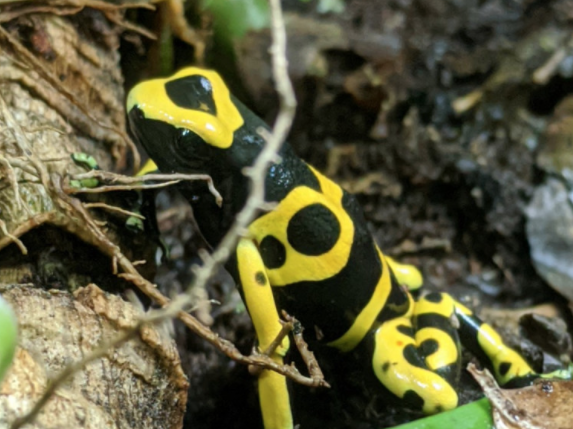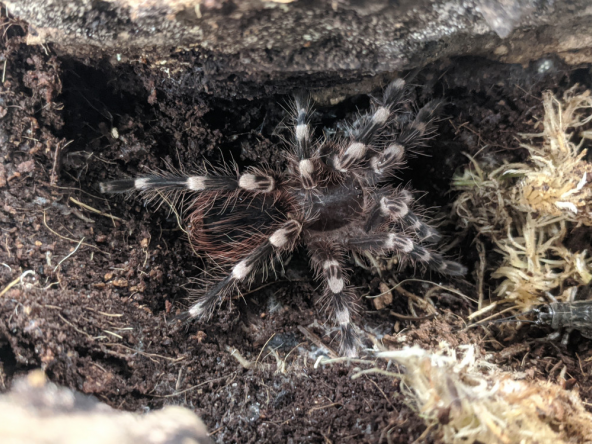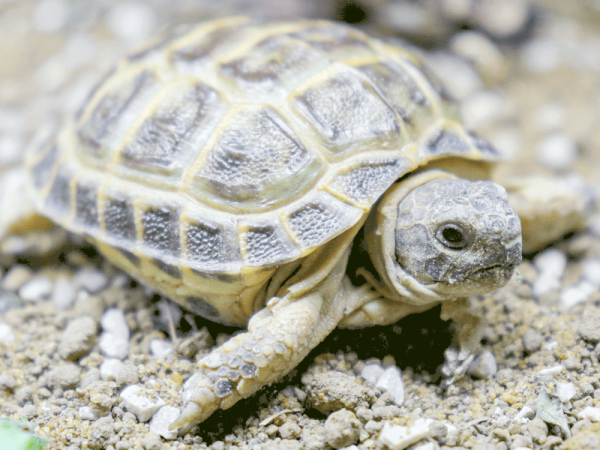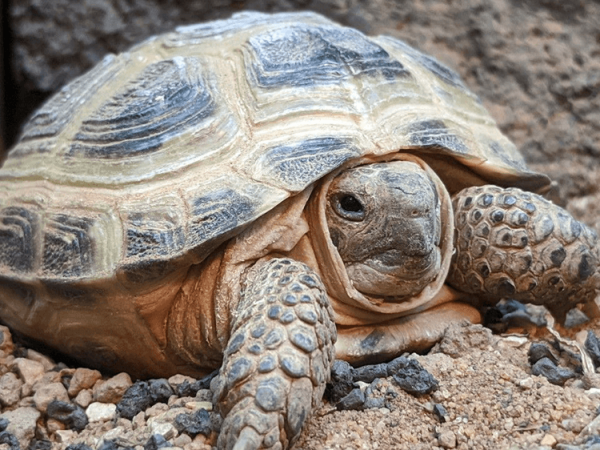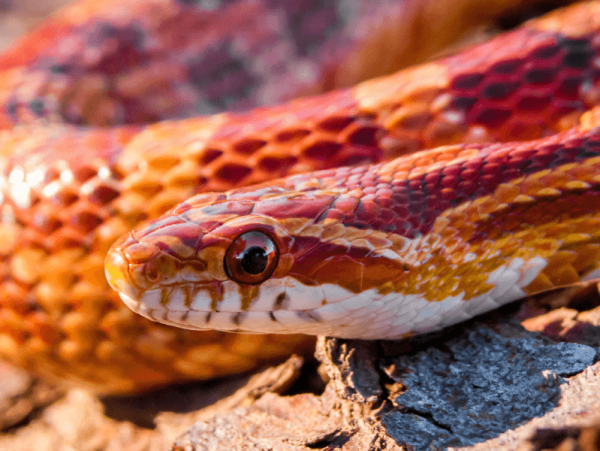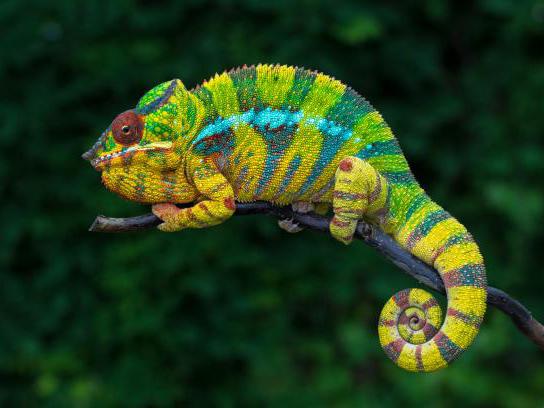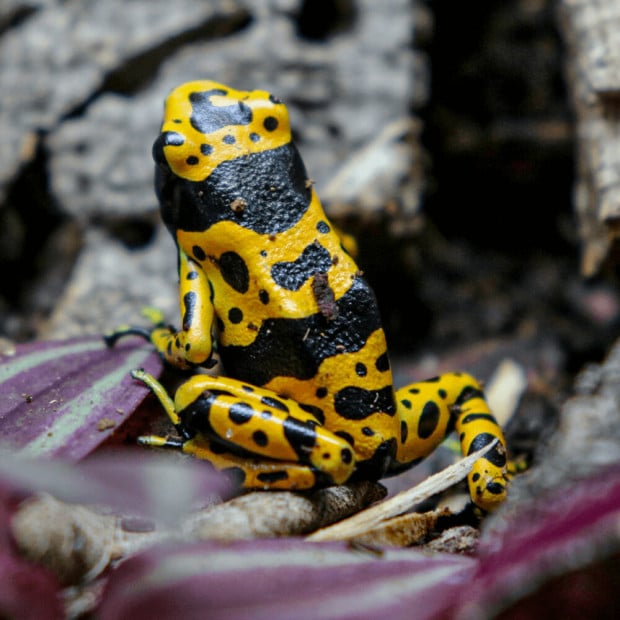Optional extras
Bumblebee dart frog, Dendrobates leucomelas, care sheet
Categories: Care sheetsAmphibians
The Bumblebee dart frog is a species of frog which originates from South America and is so-called for its bright yellow and black skin. Like all dart frogs, they are able to secrete a toxin through their porous skin, though this is produced with the ingestion of wild insects such as ants, so isn't a worry in captivity with their fly and cricket diet.
These frogs can often be found close to streams and small bodies of water, even though they are not great swimmers, loosing their webbed feet into adulthood and becoming a more terrestrial amphibian, favouring the leaf litter, mosses and tree hollows of the forest floor. Being amphibian these frogs cannot be handled due to extremely sensitive skin - contact with our skin can result in damage and discomfort for them.
Housing
Bumblebee Dart Frogs are active animals and diurnal in their habits, meaning they are likely to be visible a lot of the time. They are able to be kept in pairs or very small groups, tank size permitting as aggression is common towards each other if they do not have sufficient space to escape to. A terrarium of 60 x 45 x 45cm is a good size for a couple of frogs, whilst providing plenty of places to escape company and feed individually.
Heating and lighting
One thing to consider when housing these frogs is the heating element you use. Dart frogs aren't very tolerant when it comes to heating so would only require a warm area with a maximum temperature of 24°C, and 15-18°C towards the colder end. This can be accurately monitored with digital thermometers.
A heat mat will provide a good source of heat but will need fitting to the relevant thermostat to ensure the enclosure does not overheat. Nighttime temperature can drop to around 15°C and so may not require any extra heating.
Even though this species spends most of its time on the forest floor or hiding in the dense leaves and moss, they would still be exposed to some UVB in their natural environment. Providing this in your enclosure will boost your frog’s health and help create a natural setting, while also creating a day-night cycle.
A UV tube such as Arcadia's ShadeDweller (height dependent) would provide them with as much UV as they need so long as the bulb is changed regularly (lifespan is bulb dependent) as the UV will fade but the light will still be glowing over time.
Humidity
Dart frogs require a humid environment of around 70-80%. Regular spraying and foggers are a good way of keeping this humidity stable and preventing the enclosure from drying out. Humidity can be monitored with a good quality digital hygrometer. It is also vital that any water in the terrarium is dechlorinated as the chlorine can cause the frog’s skin to dry out and can cause long-lasting damage.
Large bowls or pools are not recommended as dart frogs are not great swimmers, lacking webbed feet, so shallow dishes should be used.
Substrate
Moss, a good substrate mix (such as coco soil or other earthy substrates) and lots of live plants can help also help maintain the level of humidity and provide a natural setting for the animals. Having relatively sensitive feet, leaf litter can make a good addition preventing prolonged exposure to a boggy or wet substrate, as well as logs, rocks and foliage for your frogs to climb up. Tank decoration such as this will also add a challenge, enrichment and plenty of hiding places to the enclosure.
Diet
Being insectivores, these frogs will eat feeder insects such as tiny crickets (age and size-dependent), springtails, and fruit flies, which can be gut loaded to make them even more nutritious. Live food should be dusted with good quality calcium, D3 and multivitamin supplements in a suitable regime throughout the week so that your frog receives all the required nutrients from its live food. Vitamin A is vital to frogs and will play a big part in vision, skin health and tissue growth - especially as frogs can be prone to neurological disorders.
Species factfile - the Bumblebee dart frog:
- Scientific name - Dendrobates leucomelas
- Size - 2-3cm
- Habitat - leaf litter, moss and tree hollows amongst the forest floors of South America. Terrestrial living - semi-arboreal habits.
- Required Enclosure Size - 60 x 45 x 45cm
- UV Lighting - 1-2 UVI (7% ShadeDweller - 25-40cm away)
- Expected Lifespan - 8-10 years
- Temperature Gradient - 15°C - 24°C
- Humidity Levels - 70% - 80%
- Feeding - Insectivore - feeding on fruit flies, spring tails and smallest crickets.
- Handling - Not For Handling, amphibious species have extremely sensitive skin, contact with ours causes damage and discomfort.
Jeremy Gay is an author, lifelong fishkeeper, and exotic pet specialist. He's a former editor of Practical Fishkeeping Magazine, UK editor at Reefbuilders, a former pet store manager, and has collected wildlife in Sri Lanka and the Amazon. He's been on tv and radio, contributed to Koi Carp and Gardeners World magazines, been a product tester, a judge, and a product developer.




